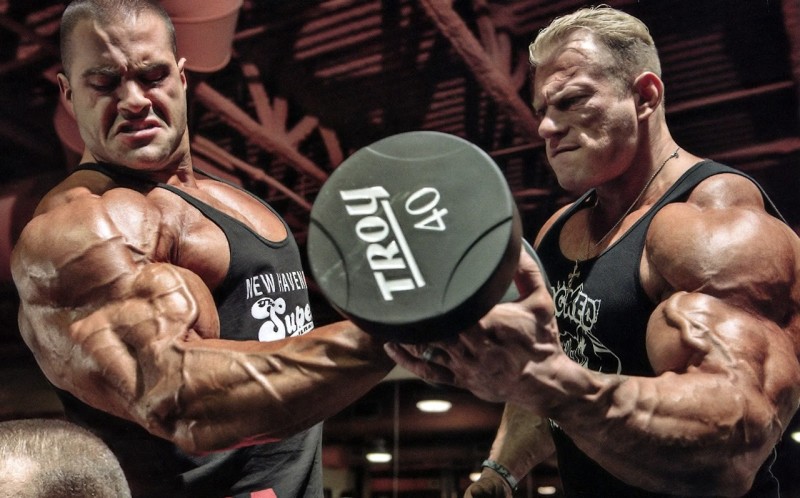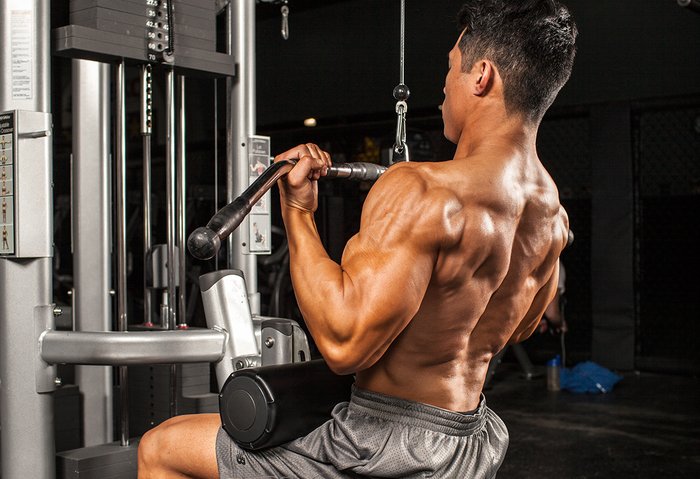The reason I initially became interested in high rep vs low reps training and muscle mass building was the result of watching years of pro bodybuilders training on the various social media outlets that post such things. What I noticed time and time again is that in the magazines they cite their rep ranges as usually between 6 and 12 reps, 12 being the upper end of what is considered to be in the range of muscle-building by many.
Upon seeing video after video of pro bodybuilders whose muscle mass borders on completely and totally unnatural, I noticed the one common thread throughout them all and that is that they train in the high rep range with great regularity. These guys just crank out rep after rep. I’m sure that they also train in the lower rep ranges as well, and that using a very wide variety of rep ranges is the ideal way to train (article to be posted shortly), but the point I’m making today is that high rep training plays an absolutely essential role in maximizing your ability to build muscle.
Check out this study, in which a group of researchers set out to explore the impact of lighter weight and higher rep training on muscle mass and function. The study was designed to compare the adaptive changes in muscle size, contractile strength, and MHC (fiber type) composition evoked by resistance training performed at either low or high contraction intensity, in this case meaning low or high reps, while equalizing the training for total loading volume.
Specifically, this study compared 10 sets x 36 reps using 15.5% 1RM to 10 sets x 8 reps using 70% 1RM. The study ran 12 weeks, with 3 workouts each week.
This is what they found:
The 10×8 program produced a 7.6% increase in muscle size (hypertrophy) and a 35% increase in 1RM (one rep maximum).
The 10×36 reps program, likely predicted by many that such a high rep range would build endurance and, if it didn’t cause an outright decline in strength and size, would surely not increase strength and/or size. The standard physiological and training wisdom is that more than 20 reps is endurance training and endurance training does not increase strength and size. You will read many bodybuilders state that anything beyond 20 reps is pure endurance training and will do nothing to produce greater muscle size. Predicting that higher reps are good for endurance, however, would be completely inaccurate.
The 10×36 program produced a 19% increase in 1RM and a 2.6% increase in muscle size. While much smaller in gains and strength as compared to the traditional rep range used, the gains are none-the-less important to anyone wanting to develop themselves to their genetic potential.
There have been multiple studies comparing changes in strength and size from different rep ranges and, despite what conventional wisdom teaches, these studies have consistently shown that higher reps cause increases in both strength and size. Yes, heavy weights and low reps increase strength and size the most, but that doesn’t mean higher reps don’t also build strength and size. Conventional wisdom has incorrectly interpreted the research as heavy weights and low reps build strength while light weights and high reps build endurance. The first lesson from the research is that light weights and high reps do increase strength, just not as much as lower rep schemes.
It is important to note that the research has shown that the higher the rep-range the smaller the increase in strength and size.
This means that reps in the range of 25- 35 can build strength an impressive amount, the higher above this that you go the smaller the increases in strength.
There is no getting around the fact that a program of heavy weights and low reps builds significantly more strength and size than a program of lighter weight and higher reps. If for some reason you are trying to decide what reps you should be doing, and only want to train in one rep range, then pick reps less than 20. This study also clearly shows that the conventional strength training paradigm is inaccurate to some degree. Higher reps do increase strength and size.
Where high reps become immeasurable regarding strength and size starts somewhere at around 150 reps. If you’re regularly training in the 18 to 25 rep range for example, you absolutely will grow muscle and increase muscular strength.
What if you combined low reps with higher reps?
What would the results be? If different physiological mechanisms are responsible for the increases in strength and size at different reps then would a combination program of different reps result in better results than single rep programs? As we have seen higher reps do increase strength and size and if they build strength due to a different mechanism than lower reps there may be some advantage in combining lower rep training with higher rep training. As obvious as this conclusion seems, I will be looking at further research in the follow-up article to this explaining how this all works together and works extremely well. Until then my friends,
Happy Lifting!
- One Rep Max Calculator
- The Squat Vs The Leg Press
- Traditional Vs Sumo Deadlift
- The Pull Up Vs The Pulldown
- The Bench Press Vs The Dumbbell Fly
- The Standing Vs Seated Overhead Press
- Crunches Vs Planks: The Best Exercise For Ripped Abs
- The Deadlift Vs The Pull Up Vs The Barbell Row
- EZ Curl Bar And Preacher Curls Vs Barbell And Dumbbell Curls
- Compound Vs Isolation Movements
- Free Weights Vs Machines
- Dips Vs Bench Press: The Best Chest Building Exercise
- The Romanian Vs Stiff Leg Deadlift
- Whey Vs Casein
- Dips Vs Close Grip Bench Press Vs Skullcrushers
- Bench Press Vs Pull-Ups Vs Shoulder Press – The Best Upper Body Lift













